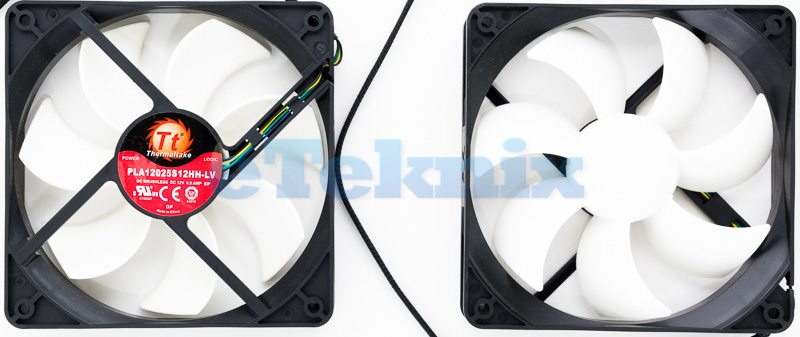Thermaltake Water 2.0 Extreme Liquid CPU Cooler Review
Ryan Martin / 11 years ago
The Thermaltake Water 2.0 Extreme is a very impressive looking unit. The 240mm radiator is high quality and its thickness gives the product great cooling potential. The pump looks almost identical to the Corsair H55 pump – in my personal opinion let us hope it is a more powerful pump because that is definitely needed for such a large radiator – the tubing also looks thin compared to the H100i but at least its made of flexible rubber not rigid plastic.
The pump acts as management hub, in the same way as the H100i, and this can be controlled through Windows providing you install the bundled software and install the USB header. Unfortunately, the pump only has two 4 pin inputs meaning only two fans can be used with it. If you want more you’ll either have to use a y splitter cable into the Thermaltake hub or you’ll have to plug fans into the motherboard or power supply.
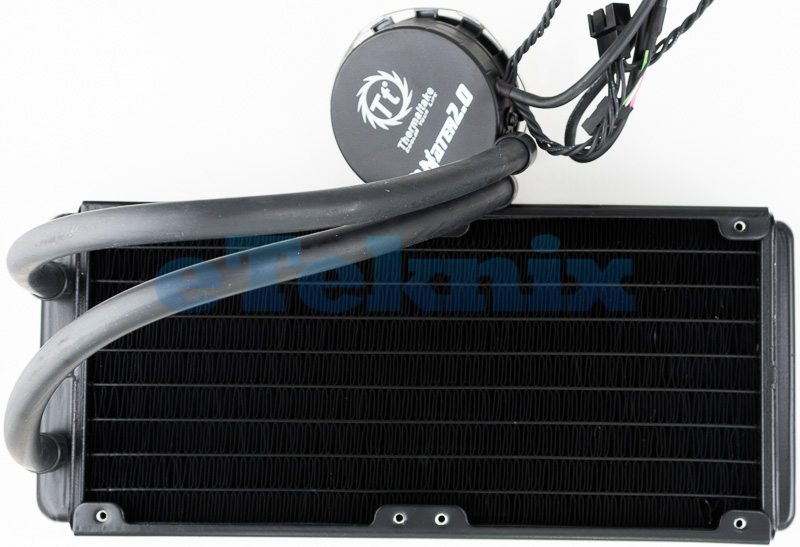
The radiator was more or less flawless and had very few bent fins which is always good to see.
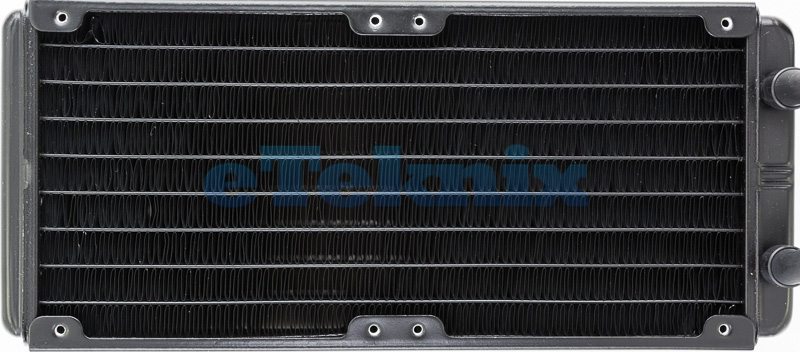
The base is entirely copper so you should get better contact. Pre-applied thermal paste is included but I am dubious of its quality, I would invest in something better like Noctua NT-H1 or Gelid GC Extreme.
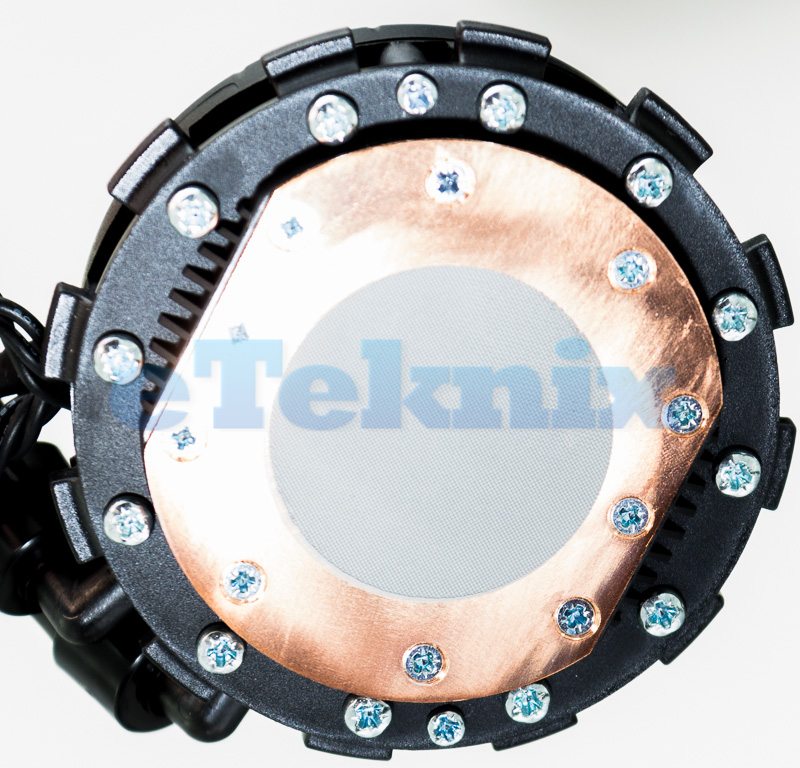
For those who can’t see the resemblance with the Corsair H55, here is a picture for comparison. I expected them to be similar because they are both produced by Asetek but being a rather large 240mm unit I was expecting the Thermaltake Water 2.0 Extreme to boast a much larger and more powerful pump unit, more similar to the H100i, but we will see if the results can prove me wrong.
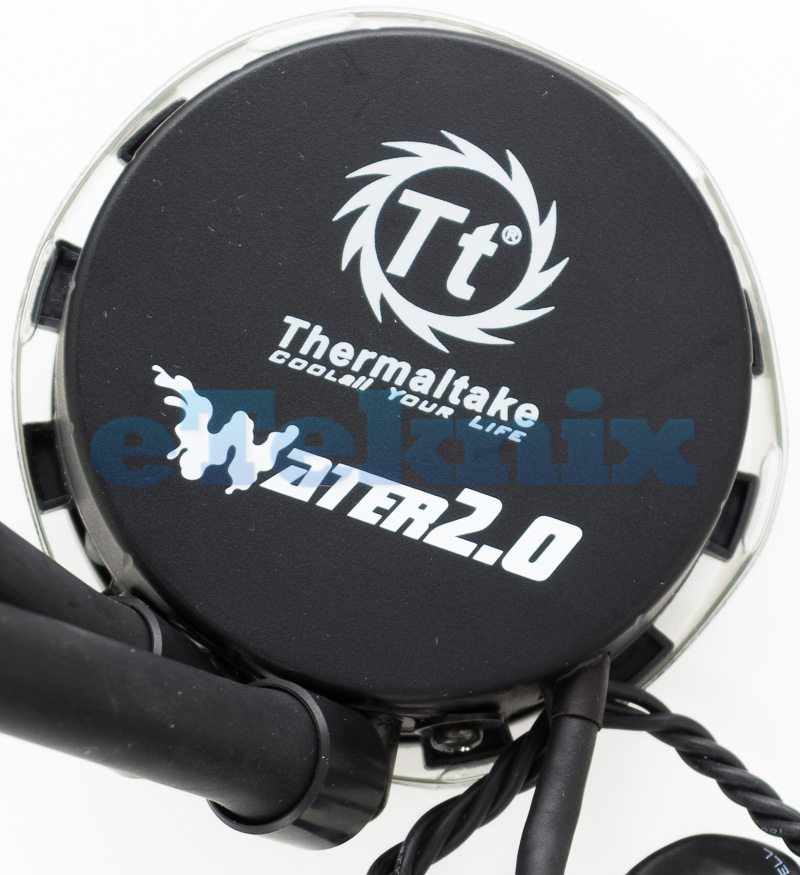
The included fans are 1200-2000 RPM 4 pin PWM fans. It is commendable that Thermaltake have included 4 pin PWM fans unlike the H100i, it gives the end user much more flexibility. Although I am slightly confused as to why the minimum end of the PWM range is 1200, I would of wanted it to be 700-800 for users who are really pedantic about absolute silence.The fans look like they have been designed for static pressure not airflow so this should give better overall results – testing will reveal whether this is the case or not.
